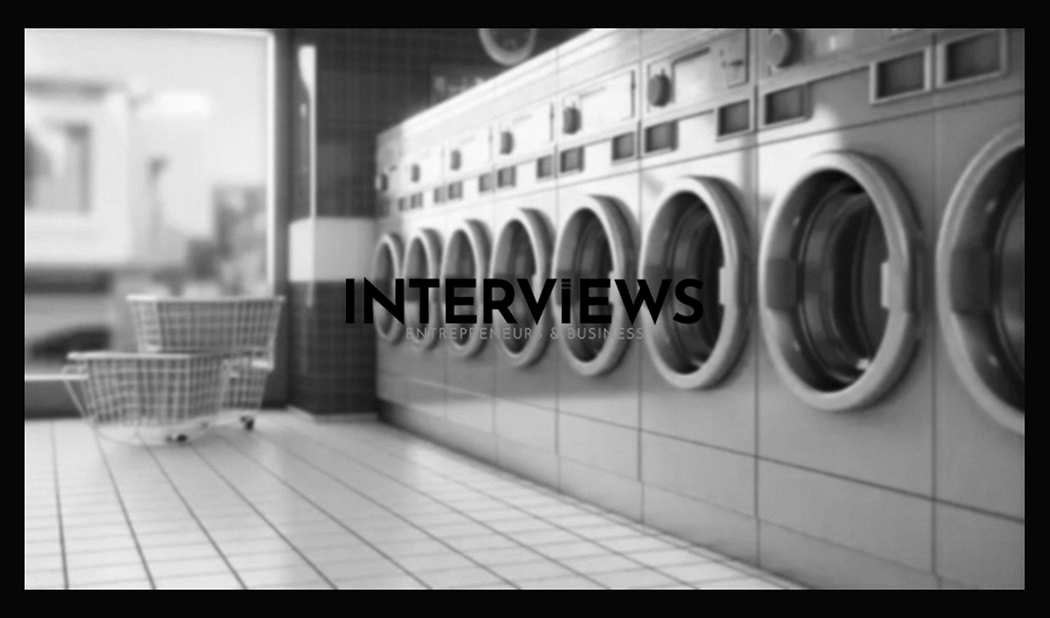Is Owning a Laundromat a License to Print Money? Let’s Get Real
Are you considering small business ownership? Escape the 9-to-5 grind and be your boss. Laundromats often come up as recession-proof high-return investments. But before you count quarters, let’s look at the reality of laundromat profitability.
The Alluring Numbers: Untangling Laundromat ROI and Profitability
Let’s get down to business. You may have heard laundromats are cash cows. Is it true? The numbers can be tempting. Industry averages show a 20% to 35% return on investment (ROI). That’s good compared to other ventures.
And profit margins? Hold tight. They average between 30% and 40%. Suddenly, folding towels sounds better. Plus, laundromats have a surprising success rate of around 95% after five years. That’s more stable than trendy restaurants.
Now, let’s focus on revenue. The average laundromat earns around $300,000 annually, according to experts. This isn’t pure profit – you have bills to cover. Monthly profits can be between $1,500 and $30,000 depending on your location and size.
And here’s the kicker: laundromats can generate passive income. Set up efficient systems and processes. They won’t run themselves completely. But you may not be tied to the dryer all day.
Why the Suds are So Profitable: Key Ingredients to Laundromat Success
What’s the secret sauce? Why do laundromats often do better than other businesses? Several factors make them resilient and lucrative.
First, we need to recognize: everyone needs clean clothes. Laundromats provide an essential service. Rain or shine, people will always need laundry done. This demand makes laundromats recession-resistant. If the economy falters, people still need clean socks.
Another major advantage lies in low labor costs. The self-service model means customers do most of the work. It lowers payroll headaches and boosts profits. You’re not paying chefs or stylists; you provide machines and space.
Laundromats also boast scalability and flexibility. Start small and grow based on demand by adding machines or changing services. You can operate it full-time or part-time based on your goals. Want a side hustle that could blossom into an empire? Laundromats can do that.
And growth-minded owners squeeze more revenue from their laundromats. Ancillary services help here. Think beyond washers and dryers. Services like dry cleaning drop-off or wash-and-fold can significantly boost profits. Be a one-stop shop for everything laundry-related.
Let’s not overlook the power of repeat customers. Laundromats thrive on loyalty. Once someone finds a clean, reliable laundromat, they stick around. Studies show about 90% of patrons return. That kind of customer retention is a dream for many businesses.
Finally, remember the golden rule of real estate: location is key. A strategic location is crucial. You want to set up where people are – areas with high foot traffic and many residents who lack in-unit washers and dryers. Apartment-heavy neighborhoods are ideal.
Pro-tip: don’t hesitate to raise prices reasonably. Customers expect small price adjustments. A slight increase can greatly impact revenue without driving away loyal patrons.
The Not-So-Sunny Side: Laundromat Challenges and Risks
Alright, reality check time. Laundromats aren’t all rainbows. They come with challenges and risks. Ignoring these is like skipping the rinse cycle – it results in a mess.
The first hurdle is the high initial investment. Starting a laundromat isn’t cheap. You face significant upfront costs for equipment, property (either lease or purchase), and renovations. A serious capital outlay is necessary before seeing any return.
Next come rising operating costs. Utilities like water, gas, and electricity rack up expenses quickly. Equipment maintenance drains your budget too. Machines break down and wear out over time.
Competition must also be remembered. The laundromat market can be cutthroat, especially in populated areas. You may compete against several laundromats nearby. Standing out is critical.
And while we cover challenges, let’s list some more potential headaches: staffing issues (for those choosing staffed services), fluctuating utility costs, seasonal business fluctuations, security issues (theft, vandalism), and changing technology (customers’ expectations change over time).
The biggest threat? Bad management. It’s cited as the leading cause of laundromat failures. Neglecting your business, poor customer service, and failing to adapt can create disaster.
Show Me the Money: Breaking Down Laundromat Startup Costs
Intrigued but worried about “high initial investment”? Let’s examine the specific costs of launching a laundromat. Understanding your financial commitment is crucial.
The overall initial investment typically ranges from $200,000 to $500,000 for an average laundromat. In high-cost areas, it may reach up to $1.2 million. Yes, that’s the price of a small house. This sum covers everything from securing the space to filling it with machines.
Let’s break down major expenses:
- Lease or Purchase of Commercial Space: Expect costs between $50,000 to $200,000, depending on location and size.
- Purchase of Commercial Washers and Dryers: This is critical. Commercial washers can range from $1,500 to $5,000 each. Dryers range from $1,500 to $3,500 each. For a medium-sized laundromat, total equipment costs can hit $50,000 to $100,000.
- Retooling a Run-Down Laundromat: If you buy an old laundromat to fix up, budget at least $50,000 to $100,000 for renovations and upgrades.
Do not forget about operating costs. These monthly expenses keep things running. Typical monthly costs range from $5,700 to $17,800. Utilities – water, gas, electricity – consume a big chunk of revenue due to those energy-intensive machines.
Cutting Through Red Tape: Permits and Licenses
Before ordering washers, navigate the world of permits and licenses. Government bureaucracy needs your attention! Required permits vary by location, but here’s a typical checklist:
- Laundromat License: You’ll need a general business license to operate.
- Fire Safety Permit: Many dryers need fire safety checks for safety reasons.
- Wastewater Permit: Expect to need a permit for significant water discharge.
- Health Permit: A clean and sanitary environment is crucial; this permit is often required.
- Sign Permit: Attract customers with signage; you’ll probably need a permit for that.
Choosing Your Armor: Business Structure – LLC for the Win
Now let’s discuss legalities. When setting up your laundromat, selecting the right business structure protects your assets and yourself. While…
Forming aLimited Liability Company (LLC) is not legally required. Yet, it is a strong recommendation. Why? An LLC gives personal asset protection akin to a corporation. Your savings and home are safe from business debts or lawsuits. It also offers the operational flexibility of a sole proprietorship.
Taxes are simpler. There is less red tape than running a full corporation.
Funding Your Dream: Financing Options to Explore
Staring at startup costs can overwhelm. But, don’t panic. There are financing options to help you achieve your laundromat goals. One option is SBA 504 loans. These loans assist small businesses in acquiring major assets.
You can buy property. You can renovate existing facilities. You can purchase essential laundry machines.
Location, Location, Laundry: Where to Set Up Shop
Location is crucial in the laundromat business. You must be in the right area for attracting steady customers. Ideal locations share key traits:
- High Foot Traffic: The more foot traffic, the more potential customers see your sign.
- Close to Apartments Without In-Unit Machines: Target apartment dwellers without laundry connections.
- Near Supermarkets: Locations close to supermarkets capture two weekly tasks: laundry and grocery shopping.
- Between High Population Areas and Schools: These areas attract parents during school drop-off or pick-up.
Beyond the Machines: Management and Operation Essentials
Owning a laundromat is not a hands-off venture. It can be less labor-intensive, but it requires attention and commitment. Think of it as a low-maintenance plant needing care to thrive.
Successful owners know their customer base and what they want. They understand basic equipment maintenance and troubleshooting. They keep an eye on their competition and local market dynamics. Cleanliness is vital; a clean laundromat attracts customers.
Modern technology aids management. Remote management tools allow you to monitor operations worldwide. You can manage your laundromat from your phone or laptop.
Buy or Build? The Laundromat Startup Dilemma
When entering the laundromat world, choose between two paths: buy an existing one or build a new one. Each choice has pros and cons.
Buying an existing laundromat means gaining instant cash flow and an established customer base. However, you might inherit old equipment.
Starting new allows for modern equipment and total customization. You design your layout and choose the latest machines. New equipment often comes with warranties, potentially saving on early repairs.
The Success Formula: Key Ingredients for Laundromat Triumph
To improve your laundromat’s success, focus on these key factors:
- Prime Location with High Foot Traffic: This cannot be emphasized enough.
- Reliable and Efficient Equipment: Invest in durable, energy-efficient machines.
- Effective Marketing: Draw attention and promote your laundromat.
- Good Customer Service: Friendliness encourages repeat customers.
- Clean and Well-Maintained Environment: A clean space is inviting and crucial for customer retention.
- Explore Financing Opportunities: Investigate all financing options to avoid being deterred by startup costs.
Laundry Not Your Load? Low-Cost Business Alternatives
If the large startup costs are daunting, there are lower-cost alternatives. Consider these options:
- Freelance Writing/Editing: Use writing skills online.
- Virtual Assistant: Help businesses from your home.
- Tutoring: Share knowledge with students.
- Pet Sitting/Dog Walking: Get paid to care for animals.
- Social Media Management: Assist businesses with their online presence.
- Bookkeeping/Accounting: Offer accounting services to small businesses.
- Affiliate Marketing: Promote other companies’ products for commissions.
- Dropshipping: Sell without holding inventory.
- Print on Demand: Sell custom products without stock issues.
- E-commerce Store: Sell handmade or vintage items online.
- Digital Products: Create and sell ebooks, templates, or courses.
- Content Creation: Sell blog posts, videos, or graphics.
- Home Repair/Handyman Services: Provide home repair help.
- Lawn Care/Gardening: Offer gardening services.
- Cleaning Services: Provide cleaning for homes or businesses.
- Event Planning: Organize events for clients.
The Verdict: Laundromats – A Wash of Success?
A laundromat may not guarantee riches. Yet it offers viable success rates. About 95% thrive over five years. Solid returns and resilience during economic downturns make it appealing. Keep your laundromat clean, safe, and well-maintained.
Avoiding Spin Cycles: Steering Clear of Laundromat Failures
Laundromats can fail despite high success rates. The key reason? Poor management. Don’t treat it as a set-it-and-forget-it business. Stay involved, listen to customers, and monitor machines; don’t become just another failed business statistic.
Remote management can change the game. It allows oversight without being on-site. Adopt technology, stay proactive, and owning a laundromat could be profitable and rewarding.





